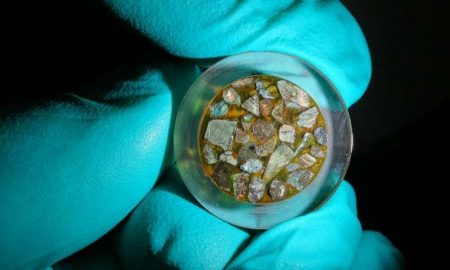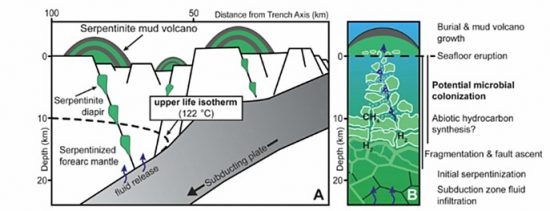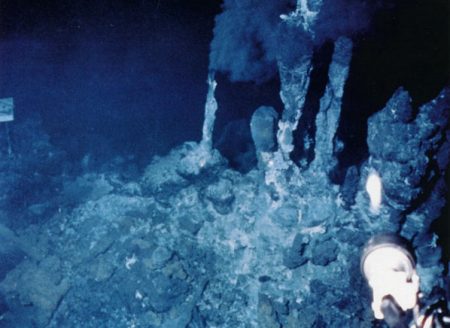April 20, 2017 – Life on Earth pops up in some of the most inhospitable places. It is only a few decades from our first discovery of teeming life in the deep oceans of our world, living off energy from hot water vents pouring from the seabed under immense pressure. In our deepest mines, we have found evidence of water with dissolved organics pointing to life thriving in places previously thought inhospitable.
And now, based on a study just published in The Proceedings of the National Academy of Science (PNAS), evidence of life has been found in rock samples from a deep-sea drilling expedition near the Mariana Trench in the Pacific, the deepest spot in the ocean. These new samples, although found just under the seabed, appear to have come from deep in the Earth’s crust pushed to their present location by the activity of a mud volcano. The sample presence of serpentine, a mineral found in deep subduction zones on the edge of tectonic plates, lends credibility to the hypothesis of an origin far from where the samples were gathered.

The paper describes what was found stating “the similarities between the molecular signatures identified in the clasts and those of bacteria-derived biopolymers from other serpentinizing systems hint at the possibility of deep microbial life.” The authors further state the discovery is on “an order of magnitude deeper than the…serpentinized Atlantis Massif oceanic core complex….These types of protected ecosystems may have allowed the deep biosphere to thrive, despite violent phases during Earth’s history….and global mass extinctions.”
So what is going on? It appears that the energy from the interaction of plates at a subduction point is producing heat and pressure and an environment suitable for anaerobic microbes to thrive in the absence of oxygen. That energy produces a form of volcanic activity which releases belches of hydrogen and methane along with mud. The gasses make for good conditions for anaerobic microbes. The scenario is somewhat similar to the recent NASA reporting of outgassing of hydrogen, water vapour, and organic compounds from the surface of Saturn’s moon, Enceladus, suggesting a possible presence of anaerobic microbes beneath the icy surface of that ocean world.
Finding serpentine in the drilling samples gives researchers a sense of just how far down life may thrive within Earth’s crust. Serpentine forms as deep as 20 kilometers (12.5 miles) beneath the surface. But scientists believe that at that depth temperatures would exceed the upper tolerance limit for life which here on Earth is 122 Celsius (250 Fahrenheit) degrees. So they have calculated an estimate of where these organic samples may have originated and come up with a depth of 10,000 meters (6.2 miles) beneath the surface.

Oliver Plumper, Utrecht University, the Netherlands, one of the authors of the study, when interviewed by National Geographic and the Smithsonian stated, “this is another hint at a great, deep biosphere on our planet.”
Frieder Klein, Woods Hole Oceanographic Institute, who did not participate in the theory and analysis presented by this paper states, “organic molecules definitely hint toward life, but the source of that life…is not clear yet.” Nonethless he refers to the findings as “truly remarkable.”










Looking for what’s right under our feet and all around… the Earth is Alive
Hi Anthony, Very much so. I think as we explore more of the vertical column from subsurface to the edge of space we will find life well represented at almost every level. And if we extrapolate from that to look at other places in our Solar System or elsewhere in space we may find that life is not the exception, but far more common than any of us could have ever suspected.